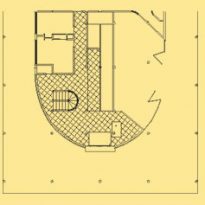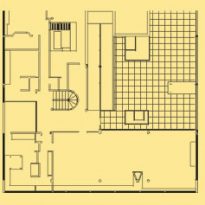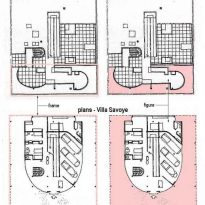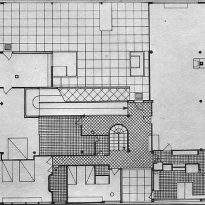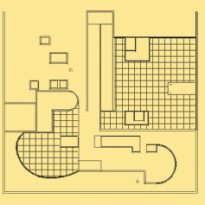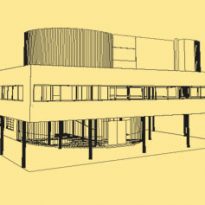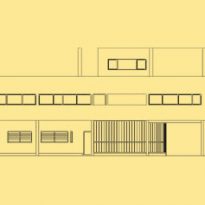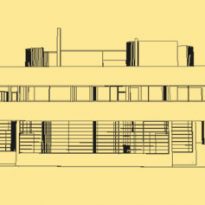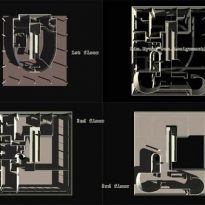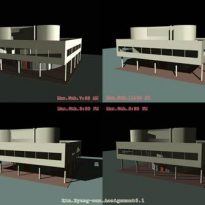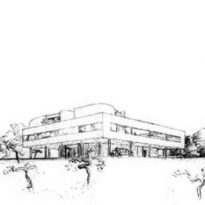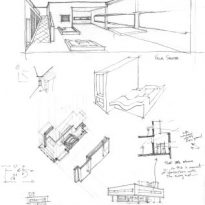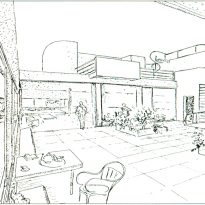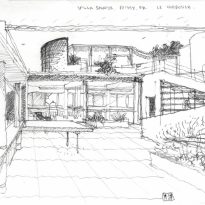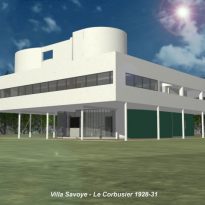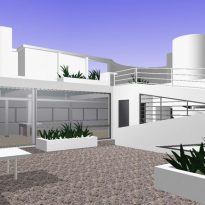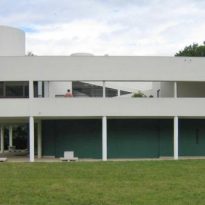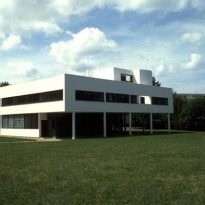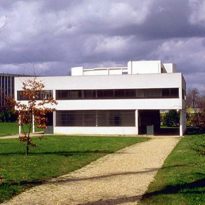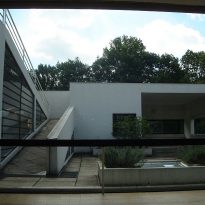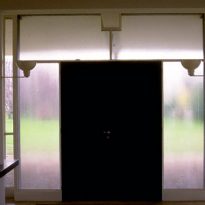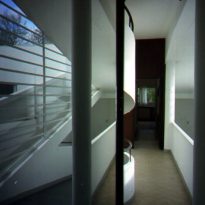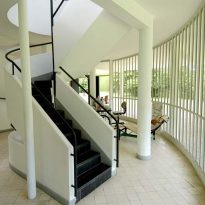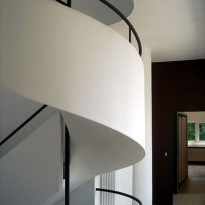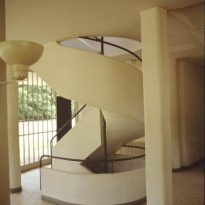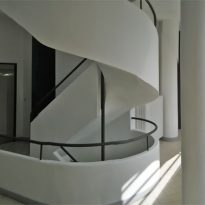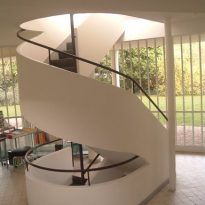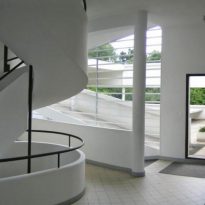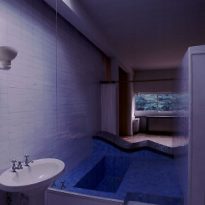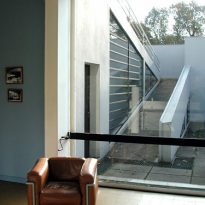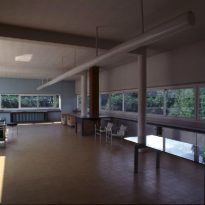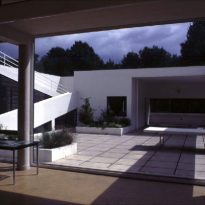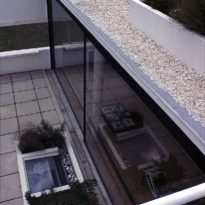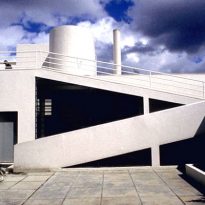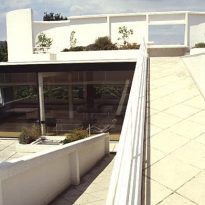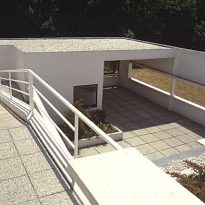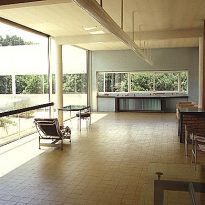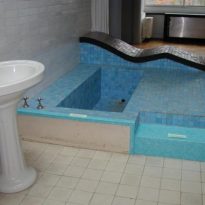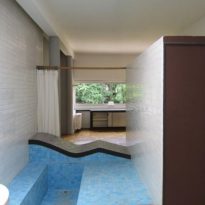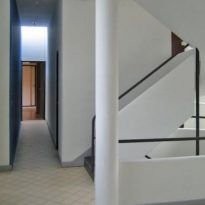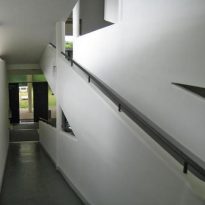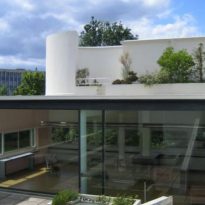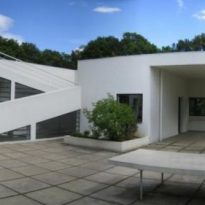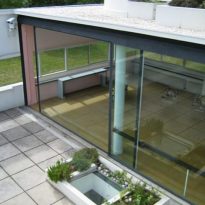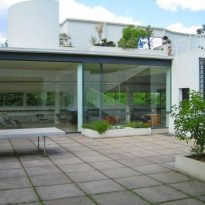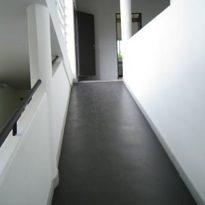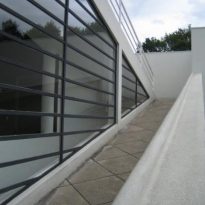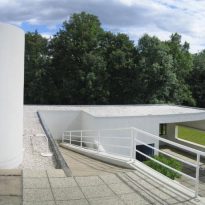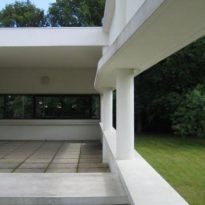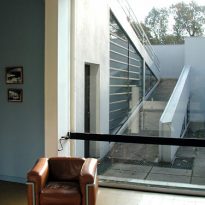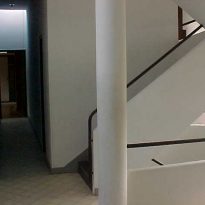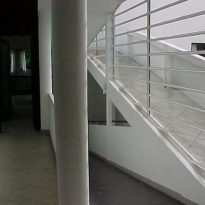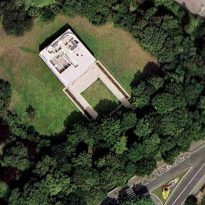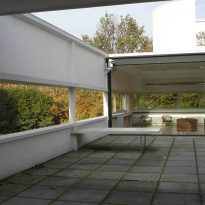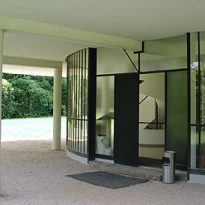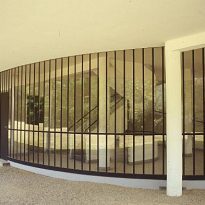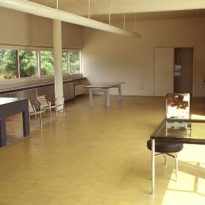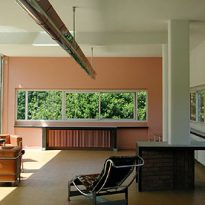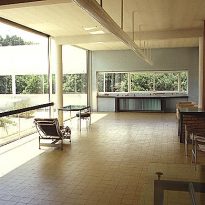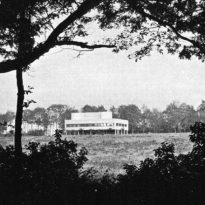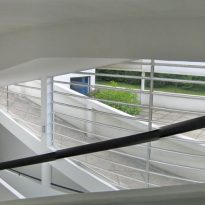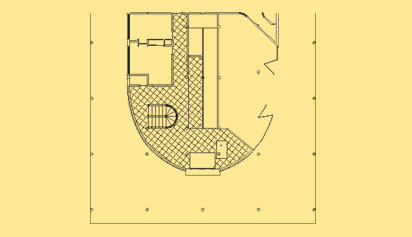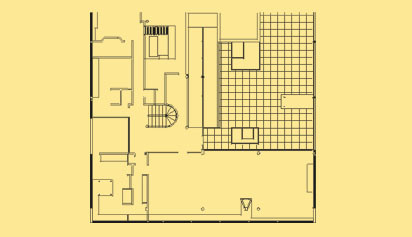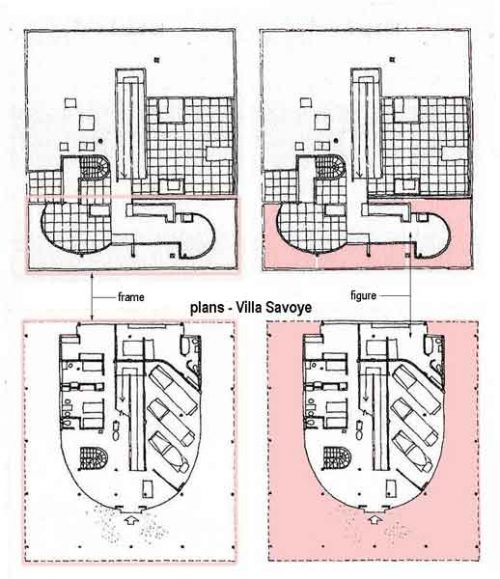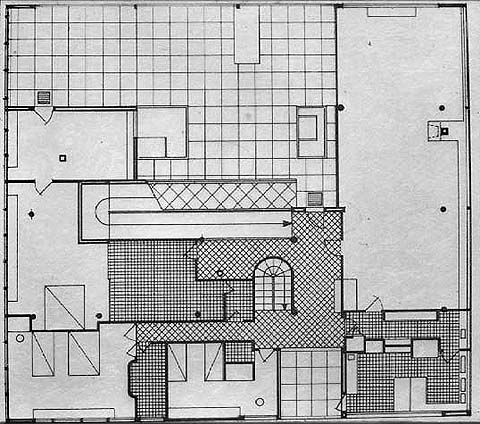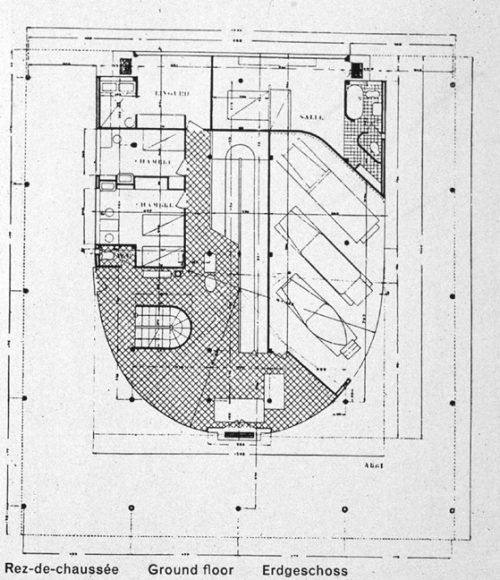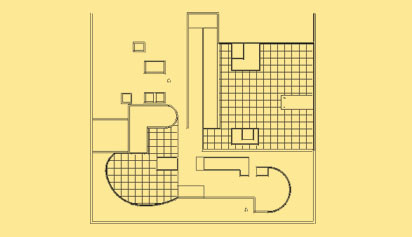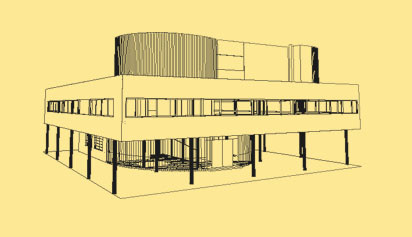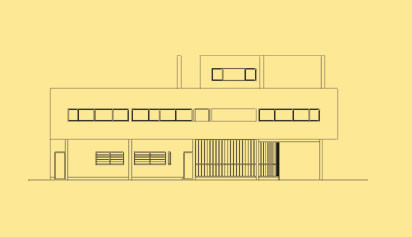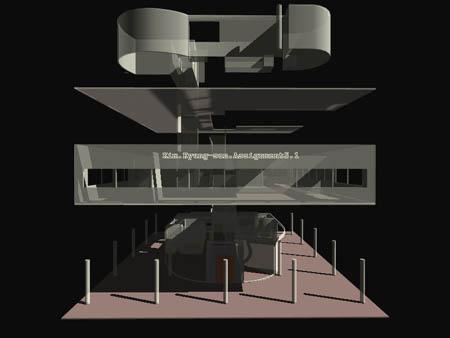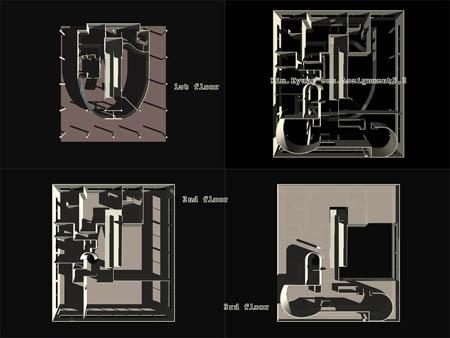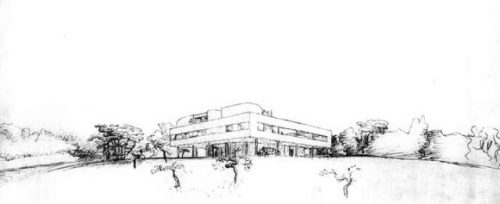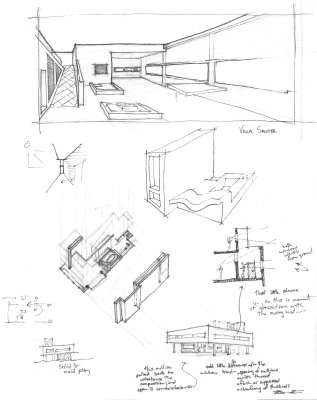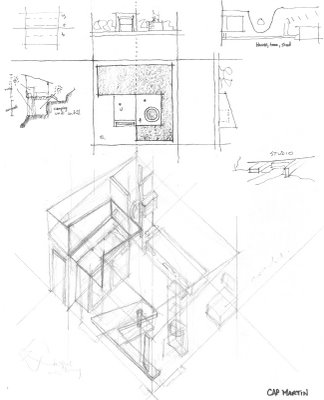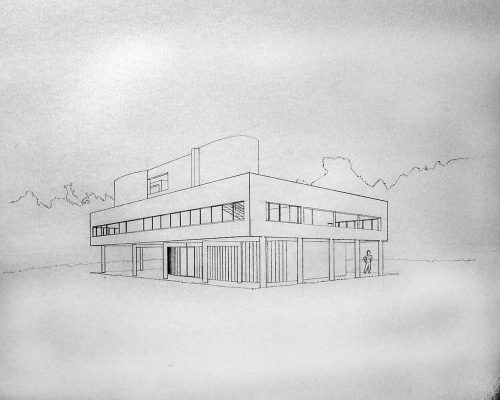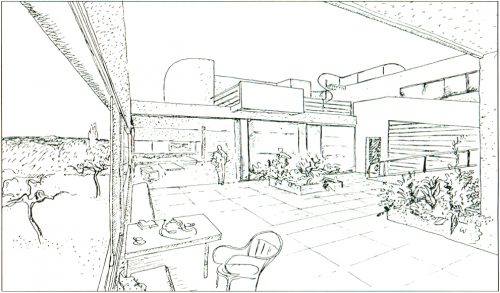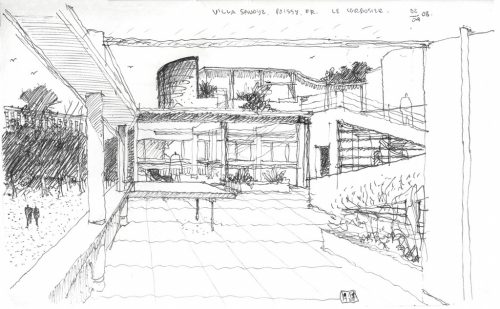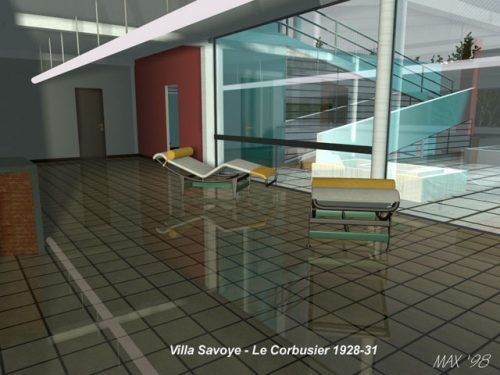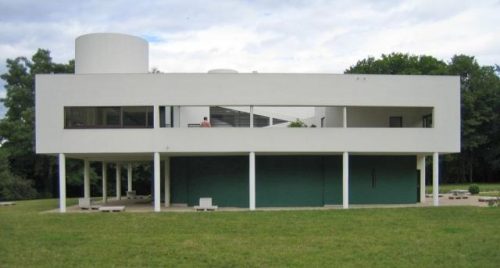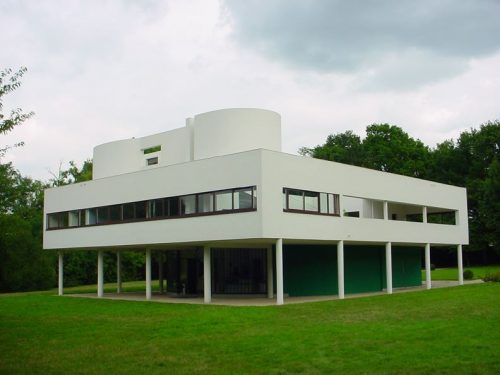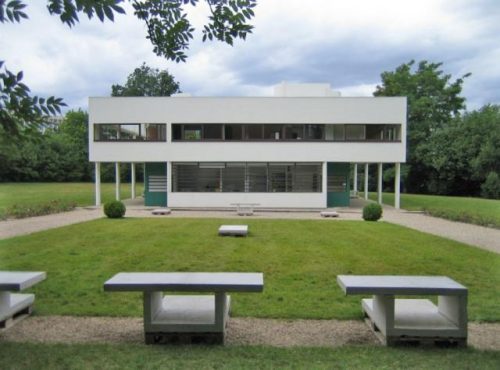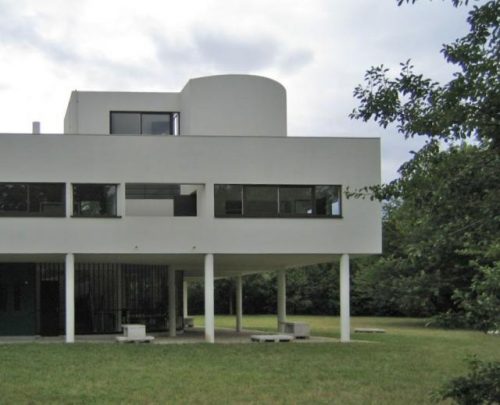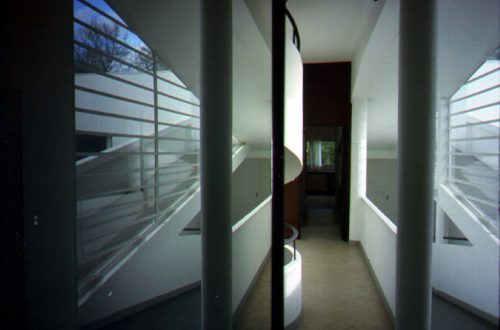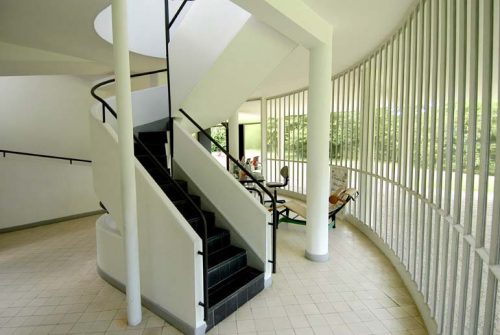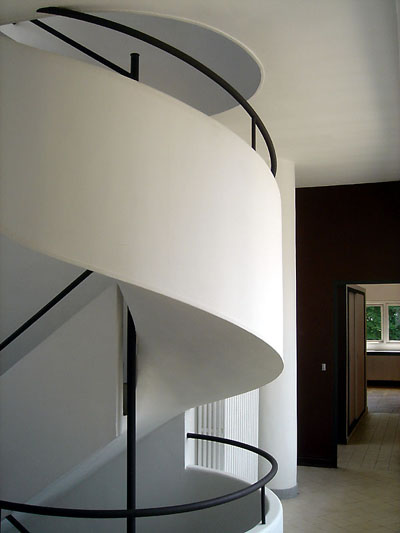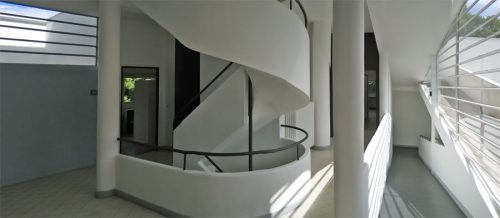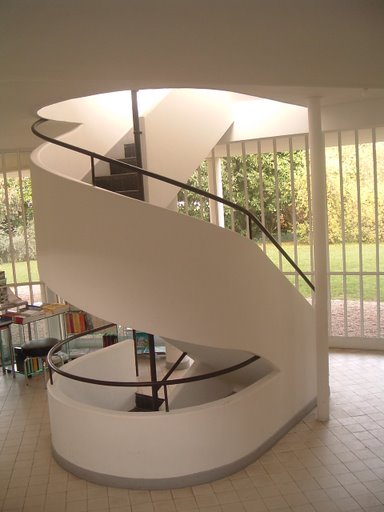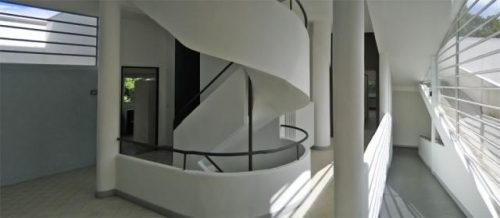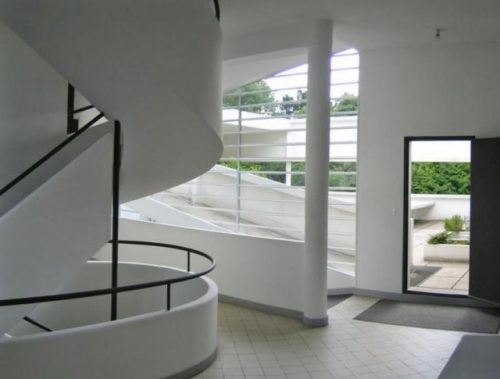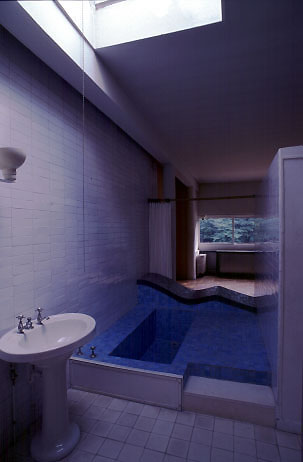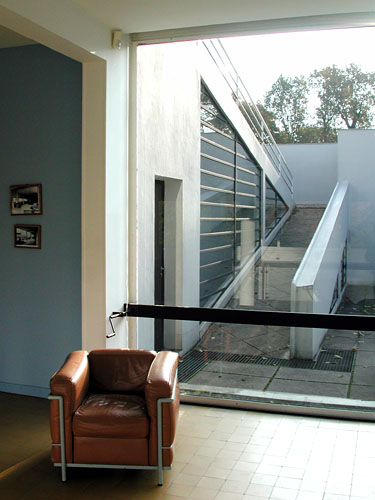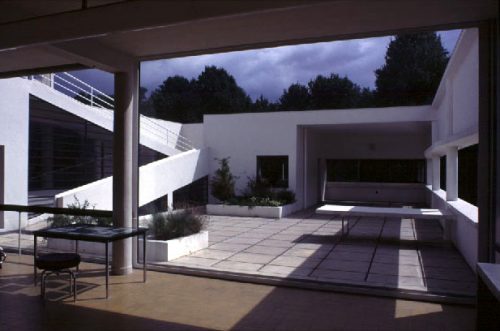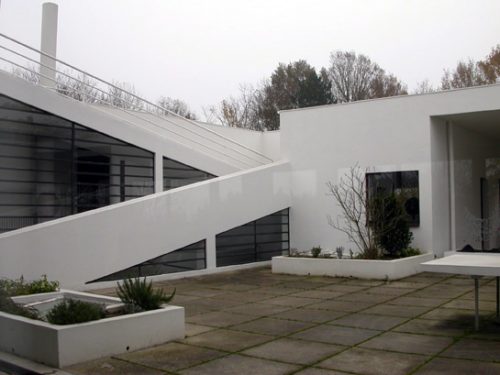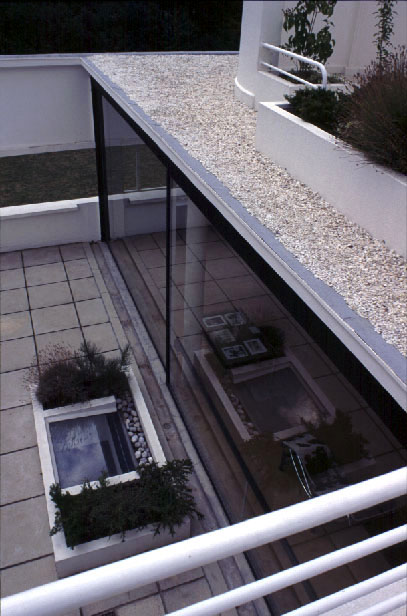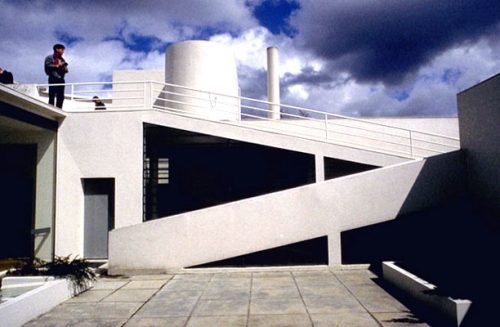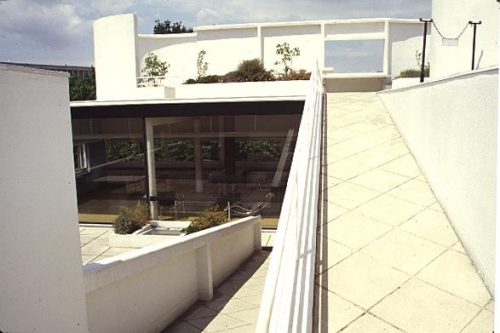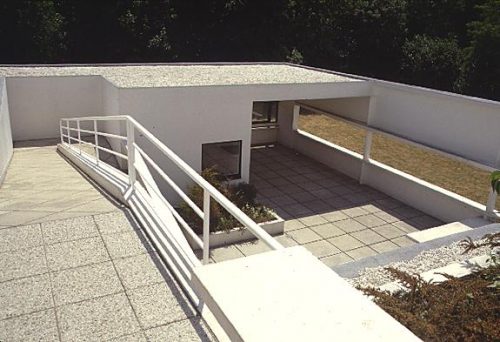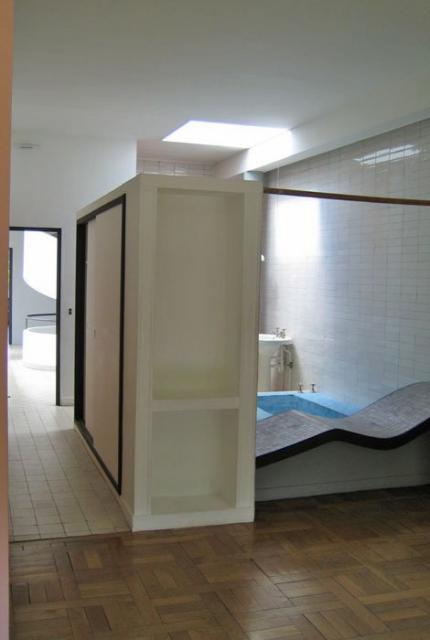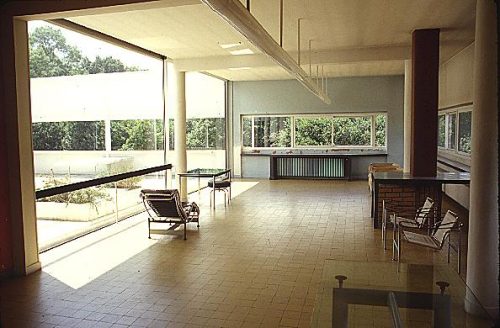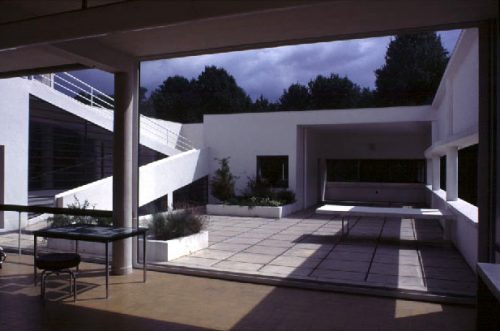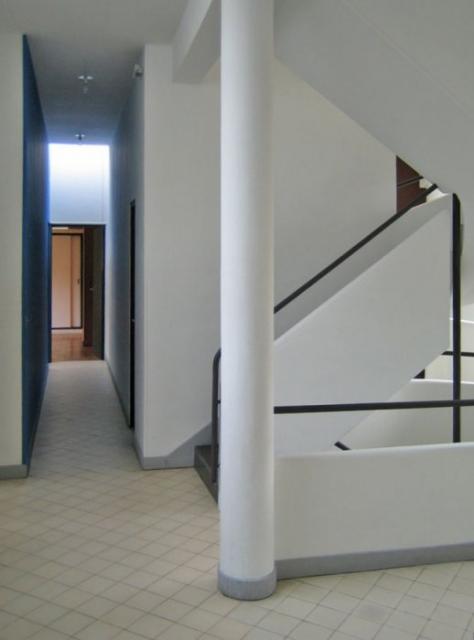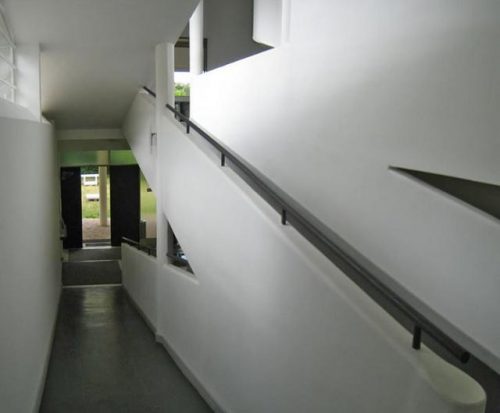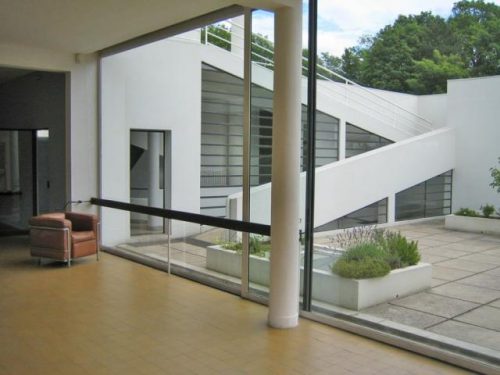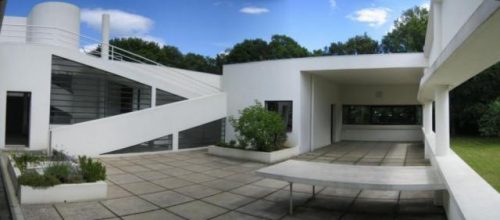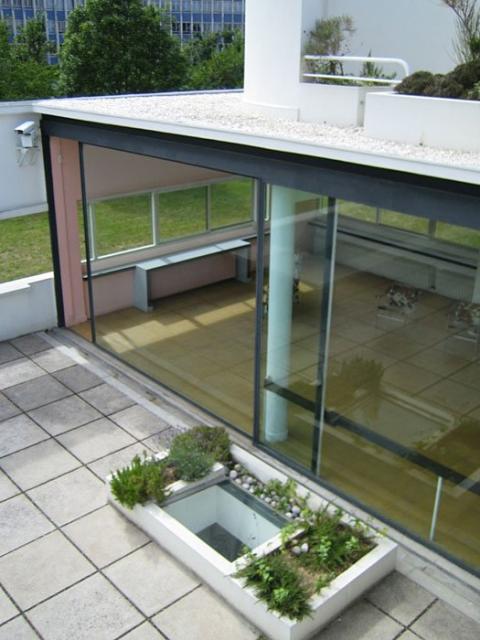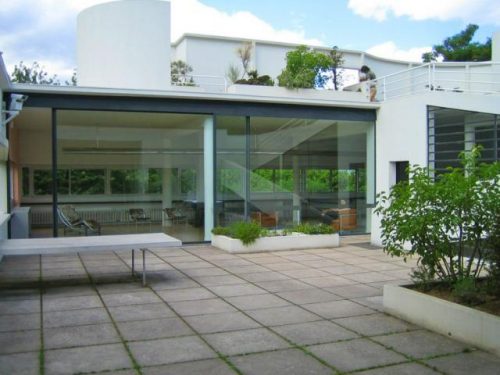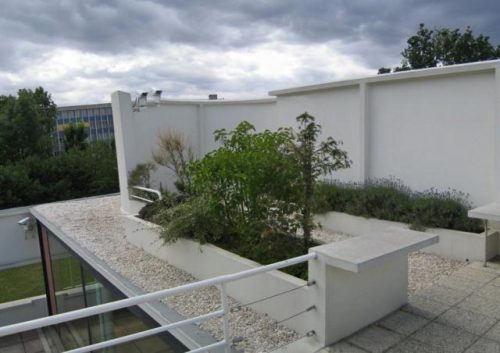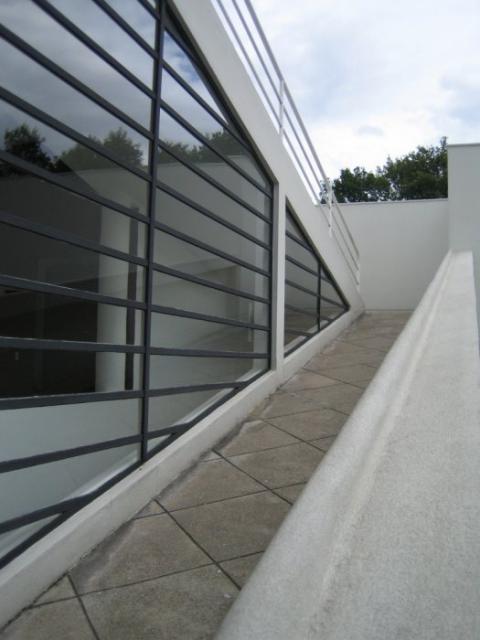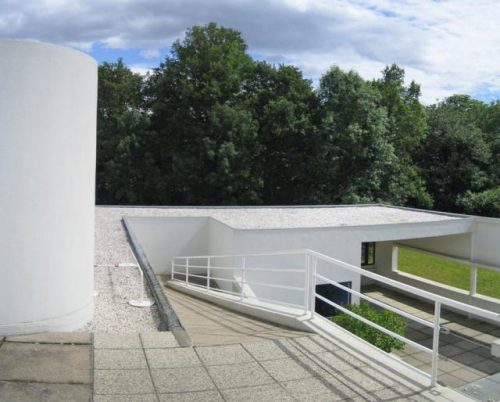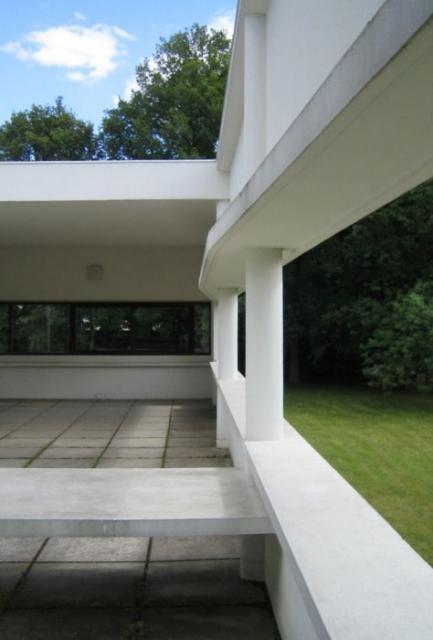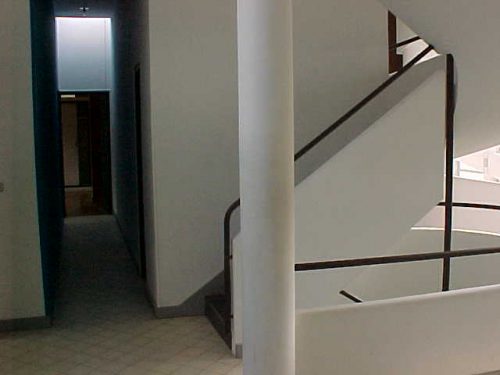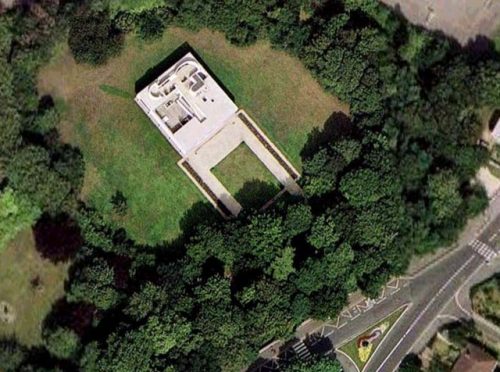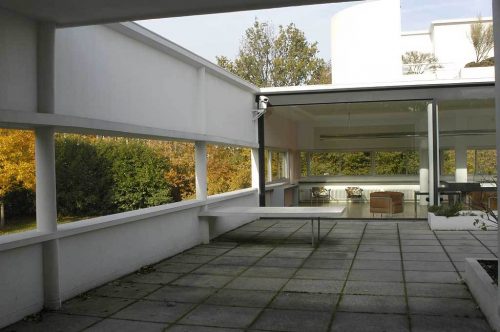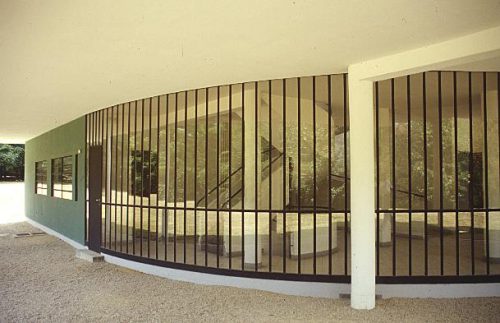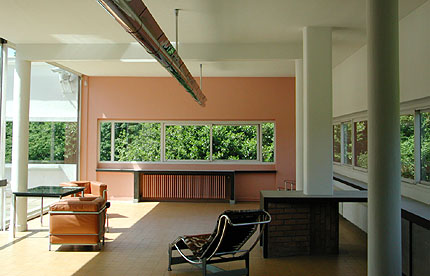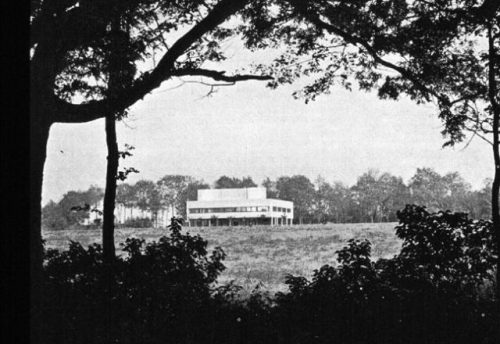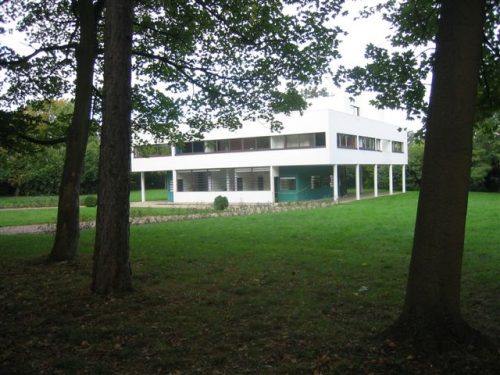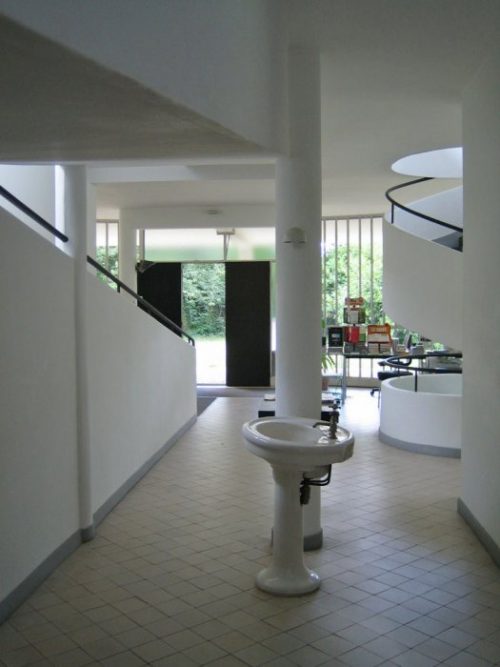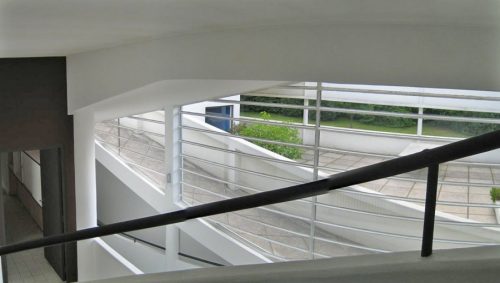Villa Savoye
Introduction
Poissy is just under an hour’s drive from Paris, and is typical of the suburbs of the capital, with long streets of single-family garden homes. Villa Savoye occupies one of these sites, standing closer to nature than to the street and releasing a large green space around it (although the construction of facilities for the city after the war has weakened significantly in the area of private housing ). The main part of the house (living room, kitchen, bedrooms and bathrooms) is located on the first floor, while the ground floor is occupied by the hall and offices for the service, with a garage capable of storing 3 automobiles of the time, something that was a milestone in the history of architecture and a great step forward for its time. The roof is flat and on it there is a small garden.
The ground floor is largely determined by the movement of a car entering the building. This movement also determines the structure, based on an orthogonal grid of concrete pillars separated 4.75 meters from each other. This forms a square grid of 23.5 meters on the side, on top of which sits the Villa.
The house was inhabited by its owners for a short period of time. The building was completed in 1929, but after the German invasion of France in 1940, was abandoned and then bombed and burned during the Second World War. In 1963, the Villa Savoye was declared as “architectural heritage” by the French government, which then proceeded to restore it because it was in a state of neglect and ruin after the attacks in the war.
It is currently a “museum,” dedicated to the life and works of Le Corbusier and maintained by the public company Monuments of France, and receives thousands of visits per year, mostly architects and students.
Concept
The Villa Savoye was designed by Le Corbusier as a paradigm of the “machine as a home”, so that the functions of everyday life inside become critical to its design.
The movement of cars to enter the interior of the house (a concept that empassioned Le Corbusier for years) is the trigger for the design of the building.
This concept also includes the fact that housing is designed as an object that allegedly landed on the landscape, is totally autonomous and it can be placed anywhere in the world.
Architecture followed the style of airplanes, cars and ships, with the declared aim of achieving mass production of housing.
Pillars supporting the ground floor also advanced this idea, and the independence of the Villa from its garden, and was recognized as one of the key points of the first generation of International Architecture.
Distribution
The ground floor has a curved form that is influenced by and emphasizes the movement of the cars in it. On one side, occupying about a quarter of the floor, is the garage, with capacity for three cars in 1930 (considerably larger than the current), and replacing the space formerly occupied by stables and horses.
In the front of the house near the garage entrance is the front door, in front of which there is a hall that has two main elements: a ramp that runs from the bottom up the entire building that constitutes its backbone, prolonging this movement from outside inward, and a sprial staircase. Everything inside the hall is painted white, representing the interests of Le Corbusier in architecture, health and hygiene in an era in which the city suffered the consequences of overcrowding in the form of epidemics, and reflects the important discovery of microbial life everywhere, including inside homes. This point is also reflected in the profusion of toilets and sinks inside the Villa, apparently well above the needs and taking advantage of the running water on which they counted.
Further away from the entrance are three guest rooms and service areas.
Materials
The materials used in the Villa Savoye is prosaic materials; such materials were used during this time in building houses for lower-class Parisians. Although the house is designed for the affluent, plaster walls and iron handraills are used.



